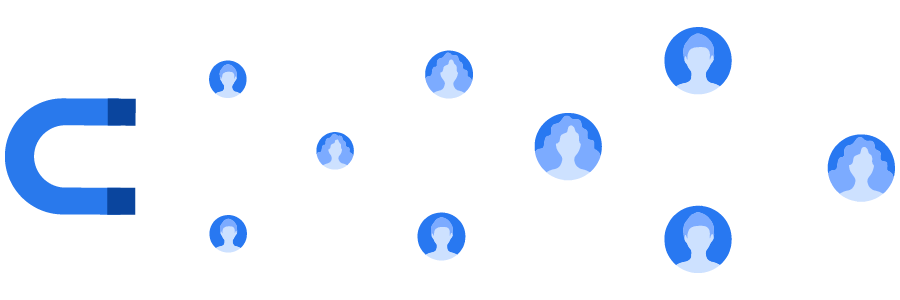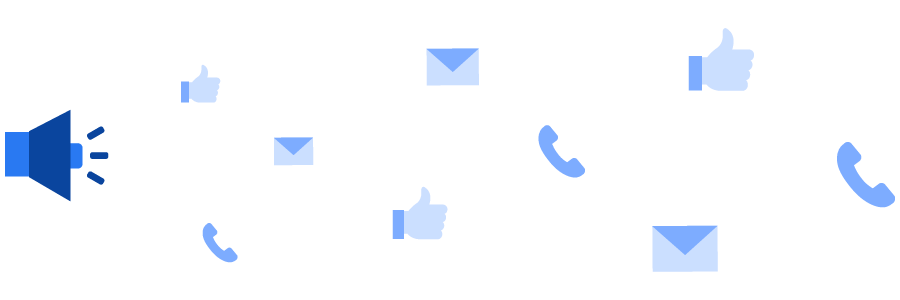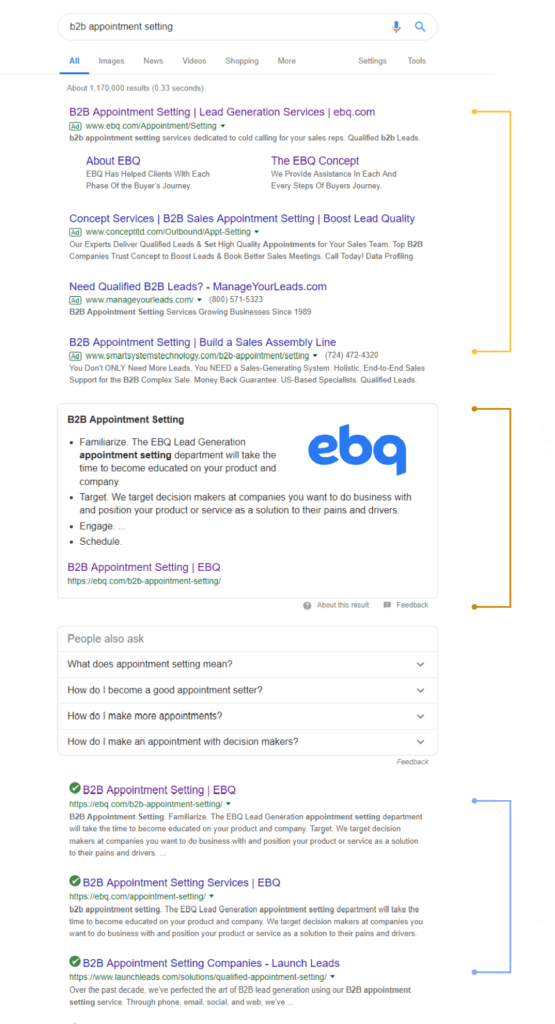Inbound and Outbound Marketing Strategies


Tom Brinker
This post was originally published in May 2019 and has been updated for accuracy and comprehensiveness.
To maximize your marketing impact, you need to create both inbound and outbound marketing campaigns. This is where search engine optimization (SEO) and pay-per-click (PPC) strategies come into play: They allow people who are actively searching for a solution like yours to find you.
Before you start blueprinting your campaigns, start by evaluating your overall business goals. Then, you can create relevant marketing goals that work towards achieving your overall goals.
For example:

In this chapter, we’ll be focusing on how you can leverage SEO and PPC to achieve your business goals. We’ll specifically go over:
- What is search engine marketing?
- 2 inbound marketing tactics
- 2 outbound marketing tactics

B2B Marketing Strategy Framework: The Ultimate Guide to Business Branding
Learn how to build a strong brand experience with our downloadable guide.
What is search engine marketing?
Search engine marketing (SEM) is the act of leveraging search engines to increase brand visibility. There are two distinct types of SEM:
- Organic: Where you do not pay search engines directly, but you rank higher on search engine results page by using on-page and off-page best practices — better known as Search Engine Optimization (SEO)
- Paid: Where you pay search engines directly to rank higher on search engine results pages — better known as PPC
We’ll dive deeper into using both SEO and PPC strategies to gain even more marketing insights. For now, all you need to know is the importance of a well-rounded SEM strategy.
Paid Ads can get very expensive very quickly — especially if you are not selective in which keywords to bid for. That’s why you need SEO: You need a way to continue ranking high on search engines to stay relevant for your prospects and to stay budget-friendly in your marketing campaign costs.
What are two inbound marketing strategies?
Inbound marketing is the process of drawing relevant leads to your website with marketing. These strategies are lead magnets, where you attract leads for further nurturing until they’re ready to convert.

In our opinion, the two most effective inbound marketing strategies are:
- Leveraging SEO
- Leveraging Social Media Pages
SEO
As we mentioned earlier, SEO is the process of optimizing your content and site in the hopes of ranking higher on search engines — particularly on Google. Your goal is to help relevant buyers discover you during their own search to answer their pain points.
We’ve provided some tips for optimizing your keywords and content for search engines throughout this guide, but how do you organize all the different pieces to develop a holistic content strategy?

- Content ideation: Use your insights about the priorities and pain points of your buyer persona to identify how you can best help them with their day-to-day work and their long-term goals.
- Keyword research: Gather hard data about how your ideal buyers are searching for answers and how much demand there is for the information you plan to provide.
- Content creation: Understand a searcher’s intent to determine how you can best meet their needs with your content and how your solution ties into their objectives.
- Visual support: Develop impactful visuals that add credibility to your content, promote brand recognition, and improve the overall user experience.
- Technical optimization: Follow all on-page optimization best practices to help search engines better understand the content on your pages and its relevance to searches being performed.
EBQ Tip: We’ve created an in-depth SEO Checklist to help you assess whether or not your site is optimized for Google.
Social media pages
While you can advertise your solution on social media platforms, your first step is to create social media pages that accurately represent your brand.
For B2B marketers, LinkedIn typically is the most effective social platform for relevant messaging.
Like most things in marketing, building a following and a community around your brand takes time. But more importantly, it requires you to actively engage your audience to find relevant leads.
Running business pages is deceptively simple, but we do recommend hiring marketing experts to build them effectively. Not only are these experts familiar with the platform, but they also know how to put your best foot forward to help stand out in your market.

Subscribe to EBQ's Bimonthly Newsletter

Subscribe to EBQ's Bimonthly Newsletter
What are two outbound marketing tactics?
Outbound marketing is the act of initiating conversations by blasting your marketing message out. Unlike the inbound lead magnet, we typically equate outbound marketing with a speaker: You’re trying to reach out to the audience in hopes that someone will listen and resonate with your message.

From our experience, two of the most effective marketing tactics are:
- PPC campaigns: Leveraging both search engine and social media marketing to gain impressions
- SDR team: Building a team of appointment setters to cold call and nurture leads further using personalized emails and phone calls
PPC Campaign
PPC campaigns are paid search engine marketing strategies that require you to bid on specific keywords that your audience may use to search for a solution. Because of where sponsored listings are displayed on search engines, you can rank even higher than the most search-optimized organic results.

Google Ads are an effective way to supplement your organic efforts through paid efforts. They can be particularly useful early on when you don’t have the luxury of ranking for a top SERP position from your site optimization alone.
EBQ Tip: While we won’t get into the specifics of our PPC approach here, we did write an article on 5 B2B Google Ads strategies that convert. Read more to learn how to structure your ads.
SDR Team
An SDR (sales development representative) is responsible for cold calling, marketing lead follow-ups, and nurturing leads in hopes of securing a sales appointment. Studies show that almost 50% of salespeople never even make a single follow-up attempt — which means a lot of your marketing leads can go down the drain without an SDR team.
From our experience, an SDR team ensures that all leads are properly followed up — even if it starts with just a cold call. By using a proven sales cadence, you can rely on appointment setters to boost your outbound marketing efforts.

B2B Marketing Strategy Framework: The Ultimate Guide to Business Branding
Learn how to build a strong brand experience with our downloadable guide.
How to use both outbound and inbound marketing to increase lead generation
In this chapter, we discussed how to best leverage SEO and PPC to create an all-bound marketing strategy. We also included two additional marketing strategies to boost your inbound and outbound marketing strategies.
Struggling to create a cohesive marketing strategy? EBQ’s certified marketers can be a valuable asset to your marketing team, or even supplement it. With one flat monthly retainer fee, we can write content, design graphics, deploy ads, and even optimize your website technically. Visit our Full-Service Marketing Agency service page to learn more.

